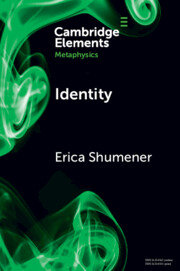Element contents
Identity
Published online by Cambridge University Press: 29 August 2022
Summary
- Type
- Element
- Information
- Series: Elements in MetaphysicsOnline ISBN: 9781009004671Publisher: Cambridge University PressPrint publication: 15 September 2022



